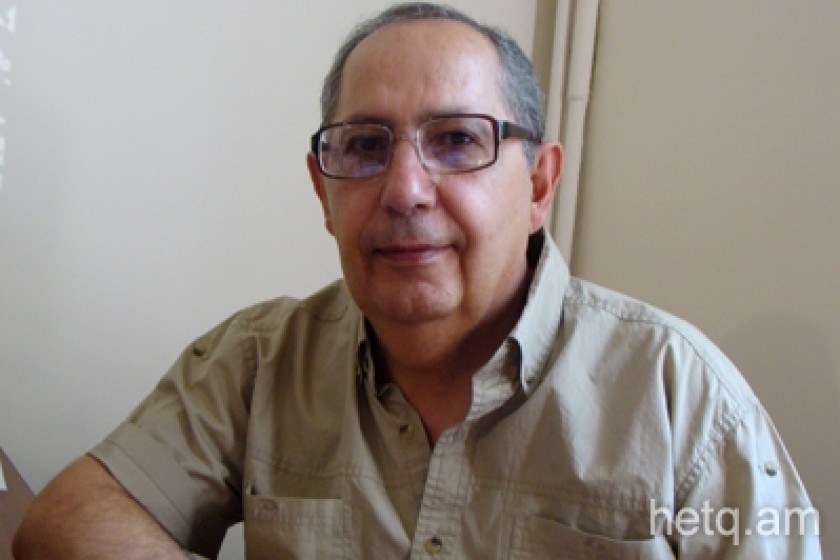
Diaspora in Focus: Armenian Government Project Hopes to Map Current Trends
Ruben Karapetyan heads the Diaspora Research Division at the Armenian National Academy of Sciences’ Institute of Anthropology and Ethnography.
“The Azerbaijanis and the Turks are saying that to combat the influence of the Armenian diaspora they will create their own diaspora. They are organizing their own diaspora based on the Armenian example while we ourselves don’t know what the model of the Armenian diaspora is,” Karapetyan says.
To come to grips with the reality of the Armenian diaspora, a four year research project was launched last year, headed by Karapetyan.
“The main task is to diagnose the diaspora and see what is taking place. There’s a crying need to take a hard look at the present-day diaspora and it’s a very diverse reality,” says Karapetyan, a PhD candidate in history.
The 7 member research team is sifting through a number of newspapers published between 2005 and 2010 in Armenia and the diaspora to see how the concept of the homeland is represented and presented to readers. Their findings will be published in two months in a book entitled “Armenian-Diaspora Links in the Armenian Press”.
A number of polls will be taken in the next 2-3 years in four countries (Armenia, U.S., Iran and Russia) to gauge the attitudes and behaviour of Armenians overseas and at home.
“I have yet to come across such a publication that takes a systematic approach to the issue of Armenian in foreign environments and their own. We say that there are 10 million Armenians worldwide but what about the question what do those ten million look like? We talk about the Armenian community in Lebanon but have no real sense regarding migration, assimilation and other matters. The same holds true for Armenians living in the States.”
Karapetyan says the project is unprecedented in terms of size and scope.
“We have found the dominant stereotype in Armenians and to be industriousness, diligence regarding work. Another stereotypical trait is that Armenians are good-natured. It seems that all Armenians are supposed to be endowed with these characteristics,” says Karapetyan.
The researcher adds that another goal of the project is to identify the national beliefs that exist in the diaspora.
“We don’t have a clear concept of what the homeland is. There is no state policy in this regard unlike the former Soviet Union and the United States of today. Large states would crumble if they don’t have a clear-cut ideology on which to be founded.”
Karapetyan argues that the project will help identify the ideology needed by Armenian today and says that material values have become the driving force today for many. He questions whether it will be possible to replace this set of values with another.
The poll will also ask Armenians in the diaspora about their desire to return to Armenia and what kind of potential this provides the homeland.
Karapetyan says polling for the project is already underway in Moscow with the help of Yuri Harutyunyan, a corresponding member of the Russian Academy of Sciences.
He says that the entire project is being financed by the Armenian government and that it has the backing of the Ministry of the Diaspora.
“We aren’t looking for financial assistance from the diaspora. What’s more important and valuable is the participation of the diaspora,” says Karapetyan.
He confesses that as yet the project team is going it alone and that it would be desirable to get local diaspora partners on board, especially in Los Angeles and Tehran.
 Videos
Videos Photos
Photos
Comments (10)
Write a comment